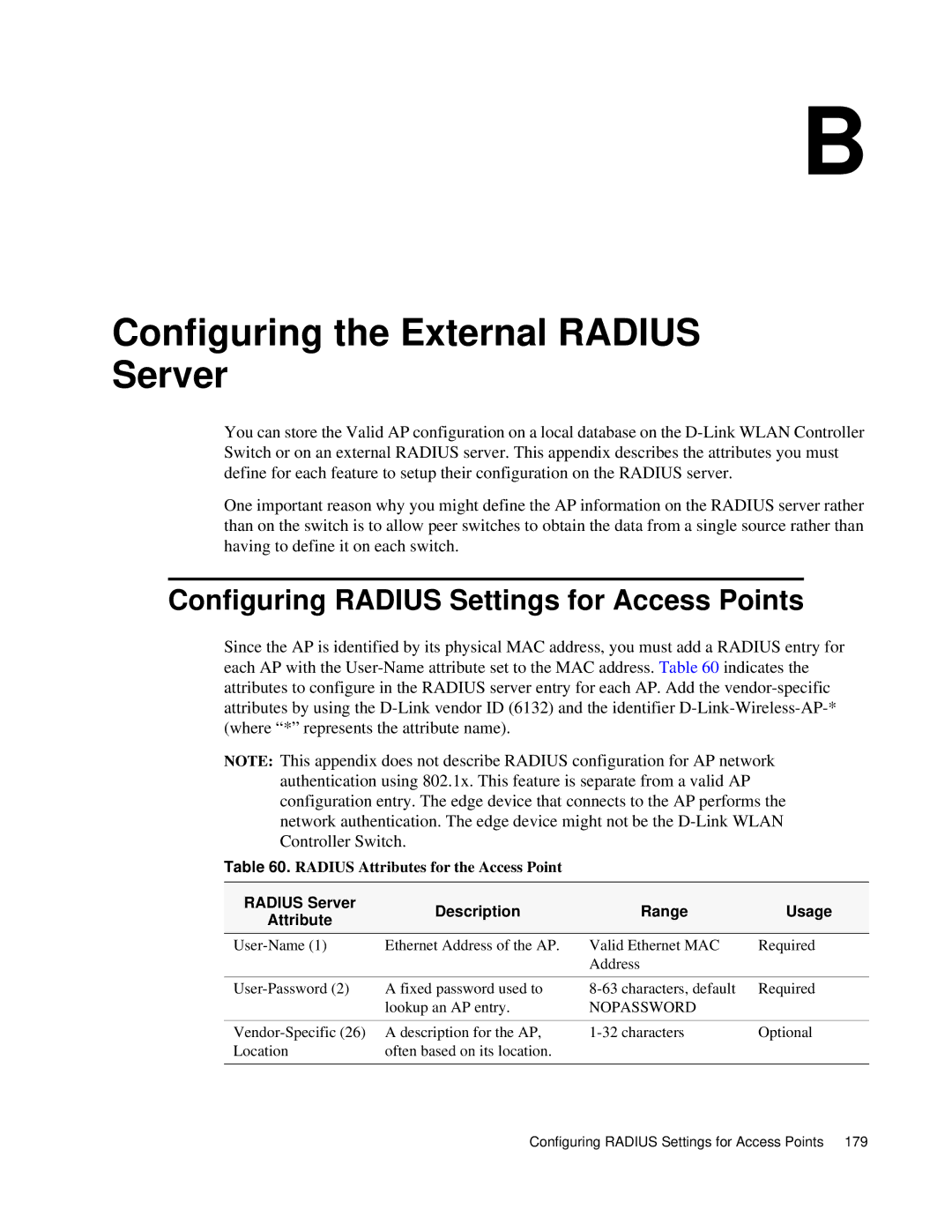B
Configuring the External RADIUS Server
You can store the Valid AP configuration on a local database on the
One important reason why you might define the AP information on the RADIUS server rather than on the switch is to allow peer switches to obtain the data from a single source rather than having to define it on each switch.
Configuring RADIUS Settings for Access Points
Since the AP is identified by its physical MAC address, you must add a RADIUS entry for each AP with the
NOTE: This appendix does not describe RADIUS configuration for AP network authentication using 802.1x. This feature is separate from a valid AP configuration entry. The edge device that connects to the AP performs the network authentication. The edge device might not be the
Table 60. RADIUS Attributes for the Access Point
RADIUS Server | Description | Range | Usage | |
Attribute | ||||
|
|
| ||
Ethernet Address of the AP. | Valid Ethernet MAC | Required | ||
|
| Address |
| |
|
|
|
| |
A fixed password used to | Required | |||
| lookup an AP entry. | NOPASSWORD |
| |
|
|
|
| |
A description for the AP, | Optional | |||
Location | often based on its location. |
|
| |
|
|
|
|
Configuring RADIUS Settings for Access Points 179
